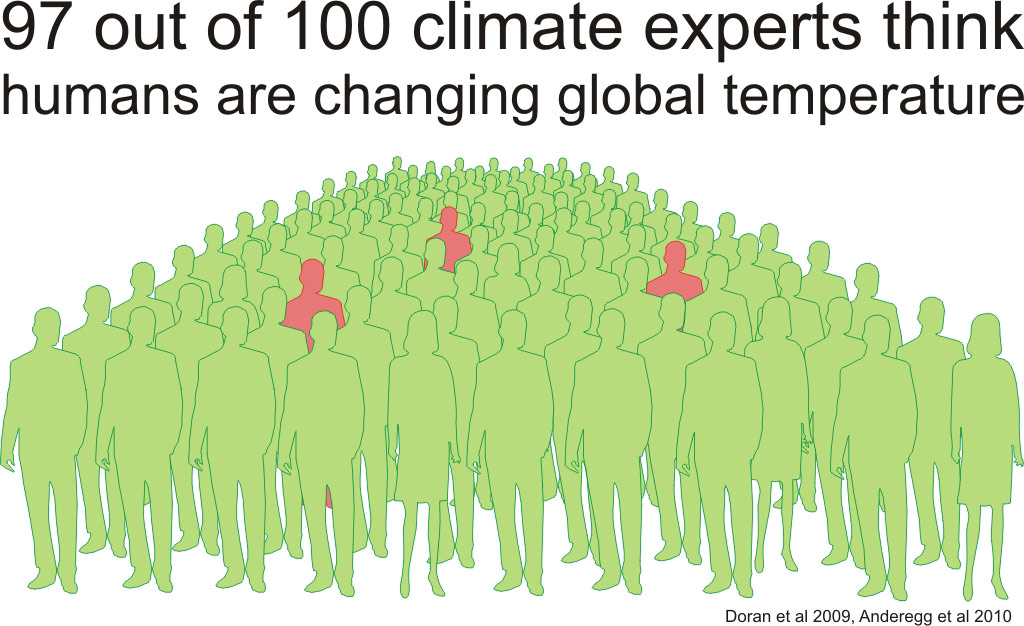Our Division Over Climate Research
Source image: https://static.skepticalscience.com/graphics/consensus_1024.jpg
In the 1800s, scientist began studying carbon dioxide in the atmosphere. In 1859, scientist John Tyndall theorized that changes in the level of carbon dioxide would affect our climate. By 1896, Nobel-Prize winning Svante Arrhenius published our first climate change model that projected the effects of human-generated CO2 would have on the environment. In the 1930s, scientist began to notice that the global temperatures were rising in the regions of the world that were being recorded. Although still controversial, the talks on human-caused climate change began.
It would take a few decades, but by the 1970s, the science was accepted. Policymakers entered into the conversation working with scientist, asking what can be done. However, as the demands for federal funding for research increased at the end of the 70s, conservatives started speaking out against climate change. 1981 brought us, President Ronald Reagan. Running on a platform of cutting government spending, Reagan made huge cuts to climate change funding. However, faced with the discovery of a hole in the ozone layer, Reagan joined the world to fight climate change and protect our ozone layer. George H. W. Bush carried on this fight, calling climate change a bipartisan issue and acknowledging it as a threat to all humanity.
With carbon dioxide becoming a global enemy, the energy industry faced a new problem. The world’s desire to move away from fossil fuels threatened their profits. They ignited a campaign to create public doubt in the legitimacy of climate change science and lobbied for politicians that would support their agendas, too much success. Despite the mounting evidence, decades of data, the effects that could already be felt, Climate change, by 2000, was a partisan issue.
Image source:https://deepmalhotra1.files.wordpress.com/2015/08/africa_politics_africaonemedia-com_.jpg
Here we are 17 years and four administrations later and the divide between climate change believers and deniers seems wider than ever. But there is hope. Recent research conducted by Yale suggests that nearly seven out of every ten people believe in climate change, and nearly half of Trump supporters believe we should take part in the Paris Agreement. Even more surprising, 80% of voters want programs that limit carbon like a carbon tax, which helps regulate carbon polluters. So if the issue isn’t with the people, then the issue is at the top along party lines. We need to pull together and vote. We not to call our representatives and let them know we support climate research and policy so they can bring it front and center in their conversations. It will take democrats and republicans working together to save our future. So call your government officials and make your vote count!
Sources:



Comments
Post a Comment
Let your knowledge, ideas, and innovation be heard. Tell us what you think and know about this topic.